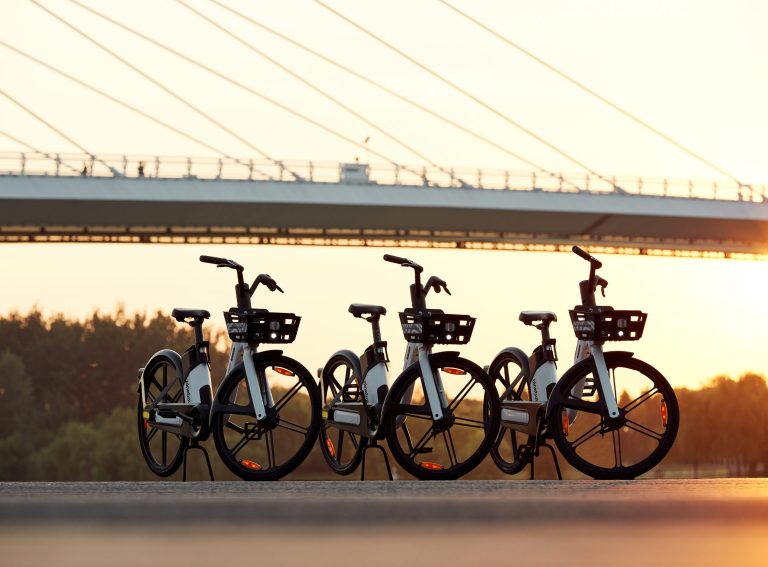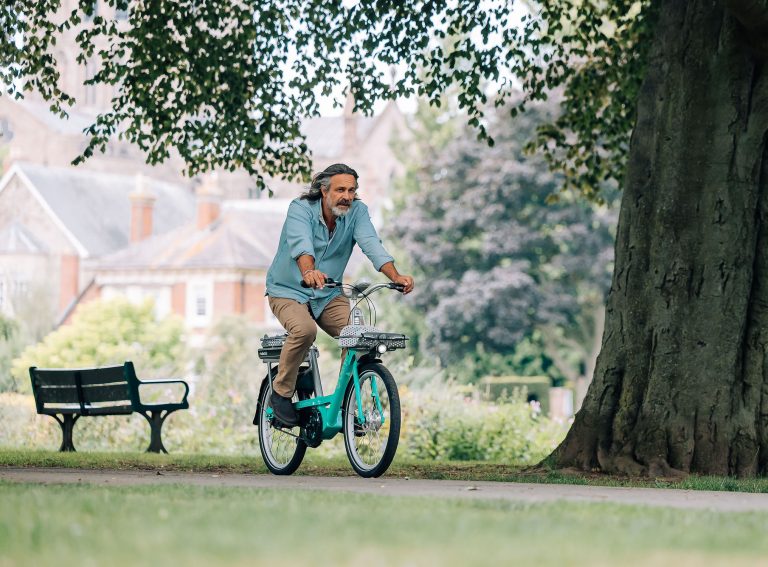Author: Phil Ellis, CEO and Co-Founder, Beryl
Beryl’s fourth annual Rider Report has unearthed a number of interesting findings including a greater diversity of riders, an increased appetite for shared multi-modality and intermodal connectivity.
Released today, the report is another step towards encouraging even more people to adopt sustainable transport habits and reflects both the company’s progress and external economic and social factors.
By launching schemes in different areas, working with different authorities and speaking directly to riders, Beryl is acquiring the knowledge and experience required to make our schemes as user friendly as possible.
And long-term, that can have a real impact on reducing congestion, cutting harmful emissions and boosting public health.
Connectivity: becoming part of the bigger picture
One notable insight this year is that people are using our services more often to link with other forms of public transport.
31% of riders now do this, compared with 27% in 2022 and it is now more popular than full commuting, which has dropped to 25% from 28% in 2022.
Partial commutes are the second most popular journey type this year and riders are most likely to use Beryl to connect with a train journey (31%). Bus is the second most popular, with 24% and private cars are the third, with 11%.
Users who connect their journeys with public transport take shorter trips, with the average journey distance 2.55km. This reinforces our vehicles suitability for first and last mile journeys. The 56% of riders that have replaced private vehicle trips with Beryl trips this year (up 10% on last year) are also more likely to have connected their trips with public transport.
Having delivered schemes with many of the UK’s major transport authorities, we are skilled in ensuring that delivery dovetails with existing transport infrastructure. These findings not only demonstrate this, but also show how shared transport is being increasingly viewed as a practical transport option.
Motivation: getting people out of four wheels and on to two
Although convenience remains the top reason for people signing up to Beryl, novelty and fun have shown by far the biggest change, increasing by 15% and 10% respectively compared to 2022. Novelty is now the third most important factor overall for signing up, compared to the fifth in 2022. It is also the top reason for those who have signed up but haven’t yet ridden and is one of the main motivations for riders to use e-bikes.
The increases are most likely being driven by e-bike riders and coincide with the launch of several new e-bike schemes, including Solent, Cornwall, Brighton and Plymouth. Novelty is the top reason for sign ups in the Cornwall, Plymouth and Southampton (part of Solent) schemes.
E-bikes are fun to use and the extra power provides a lot of benefits, especially in hilly areas such as Brighton and Cornwall. Their influence on this year’s data tells us just how much of a useful tool they can be in the long hard battle to encourage a culture shift toward active travel.
The popularity of electric vehicles: a missed opportunity
It’s not just the e-bike however. Feedback shows that, in our government e-scooter trial areas, they have also had a significant impact on riders. Across Bournemouth, Christchurch and Poole (BCP) and Norwich, the two scheme areas surveyed where e-scooters are available as part of a three vehicle integrated scheme, 79% of respondents have ridden one. This demonstrates their popularity when available.
Feedback tells us that offering riders this wider range of vehicles to use is more likely to get them out of their cars, with 41% of riders that have used bikes, e-bikes and e-scooters having done so, compared to 29% of riders that have used one mode. In fact, we know there is an appetite for greater multimodality across all schemes, with 58% of respondents in the areas without e-scooters saying they would be open to using them.
Proper e-scooter legalisation would realise this untapped potential by making them more accessible and boosting their popularity. This would amplify calls for better infrastructure and that would improve both safety and, crucially, the perception of safety. The increased importance of safety this year, with 88% citing it ‘very important’ or ‘somewhat important’ this year compared to 70% in 2022, shows that legislation could also be hugely important in getting people out of their cars.
Accessibility: making our services available to all
E-scooters are also the preferred mode of sustainable transport for people with certain mobility issues, with the number of e-scooter riders with a disability almost doubling from just 7% in 2022 to 12% this year.
Overall, the number of disabled riders using Beryl has increased by 2%. This is one of a number of small but highly encouraging demographic changes, which includes a 3% increase in the number of female riders along with 2.5% and 1.04% increases in the numbers of Asian and Black users respectively.
We work incredibly hard to ensure that our services are accessible to as many people as possible so are delighted to see this progress. As part of our design process, we consult with disability groups and sight-loss charities to gain important feedback on scheme delivery and accessibility. This year we also launched our Women’s Tour events, designed to boost the skills and confidence of female riders.
Knowledge: a string to your bow
It has been a year of great progress for Beryl, launching several new schemes and expanding many existing ones. By doing this and by speaking directly to our riders once again, we’ve been able to gather even more experience and insight into providing world class shared transport systems.
However, there is no point acquiring knowledge if you do not use it properly. A successful operator will not only listen to its riders, but will use their feedback to shape future delivery and improvement. I promise you that Beryl will continue to do this into 2024 and beyond.
The survey was sent to riders across 12 scheme areas via email and within the Beryl app during September 2023. We collected over 3,000 responses, 80% of which had signed up and taken at least one ride and 20% had signed up but not yet taken a ride. You can download the full report here.











